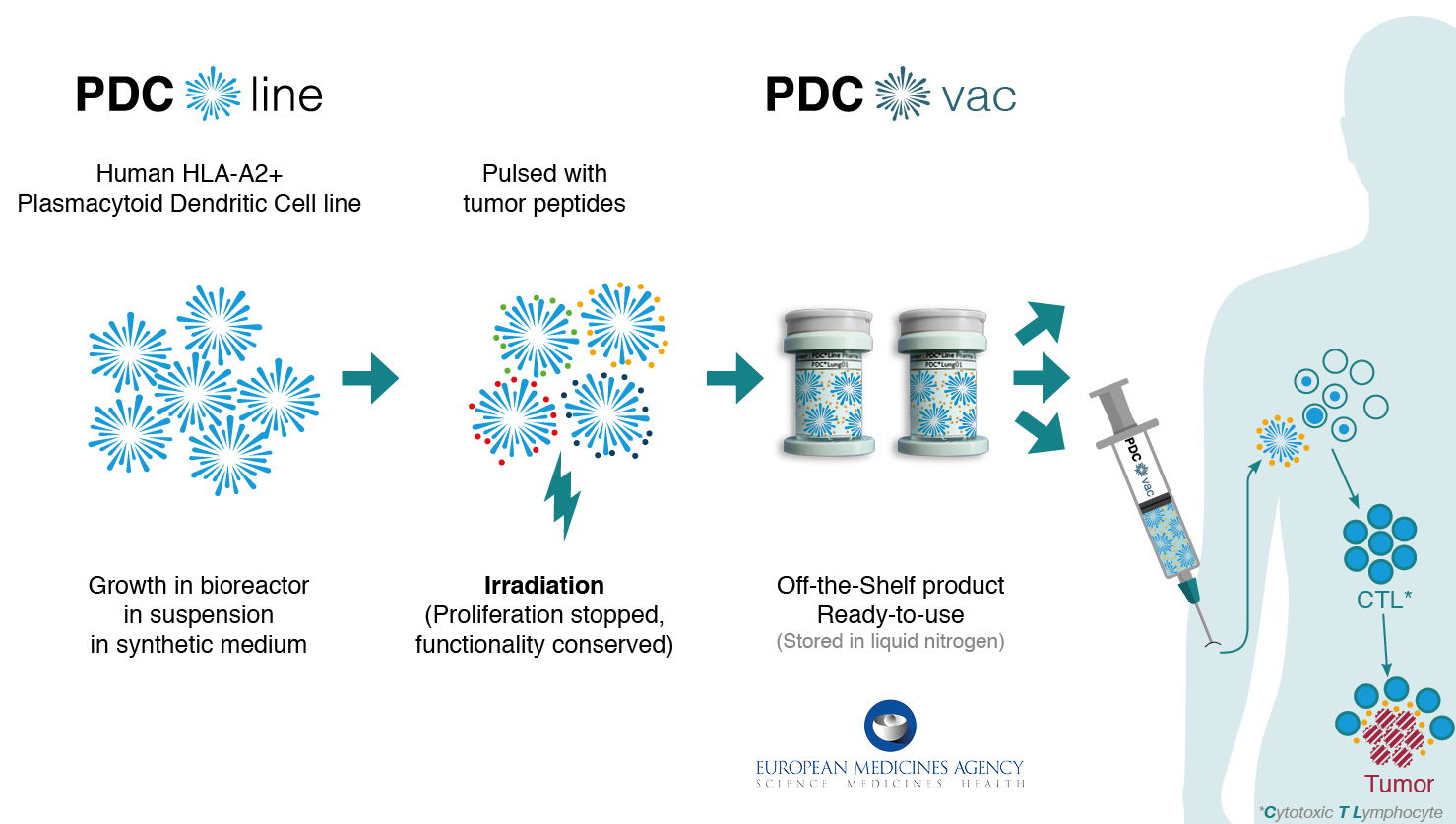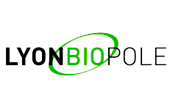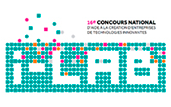Technology
PDC*vac, a new class of cancer vaccines based on a unique antigen presenting cell
The PDC*vac is a unique off-the-shelf cancer vaccine based on a cell line of Plasmacytoid Dendritic Cells (PDC*line). PDC*line is a proprietary cell line derived from a human leukemic cell expressing HLA-A*02:01 phenotype. From a fully characterized GMP Master Cell Bank, the cells are easy to expand in suspension in synthetic medium without growth, maturation or differentiation factors.
PDC*line is pulsed in vitro with HLA-A*02:01-restricted peptides derived from target tumor antigens that are expressed by the cancer type to be treated. It is irradiated to stop its proliferation and can be stored in liquid nitrogen over the long term. When needed, the off-the-shelf product is thawed and administered by injection to HLA-A*02:01-compatible patients in order to prime and boost a specific antitumor CD8+ T‑cell response. PDC*vac is classified by the EMA (European Medicines Agency) as an ATMP (Advanced-Therapy Medicinal Product) within the category of Somatic-Cell Therapy Medicinal Product.
Our breakthrough technology, PDC*vac is highly potent in priming and boosting fully functional antitumor CD8+ T cells displaying a strong cytotoxic activity against tumor cells. It is more easily scalable, more versatile and more potent than other dendritic-cell-based vaccines, and it synergizes with the use of anti-PD-1 immune checkpoint inhibitors.

PDC*vac currently comes in the form of several cancer vaccine drug candidates:
- PDC*mel: our first investigational drug for melanoma. PDC*mel completed a first-in-human phase Ib feasibility trial in 2017, to assess the safety of the product, the absence of rejection and its biological activity.
- PDC*lung: our leading candidate for non-small-cell lung cancer (NSCLC). This targets widely expressed shared antigens. A phase Ib/II trial evaluating its safety and biological activity, with and without anti-PD1, has been initiated in 2019.
- PDC*neo: our next candidate. It is currently being developed at the preclinical stage.













